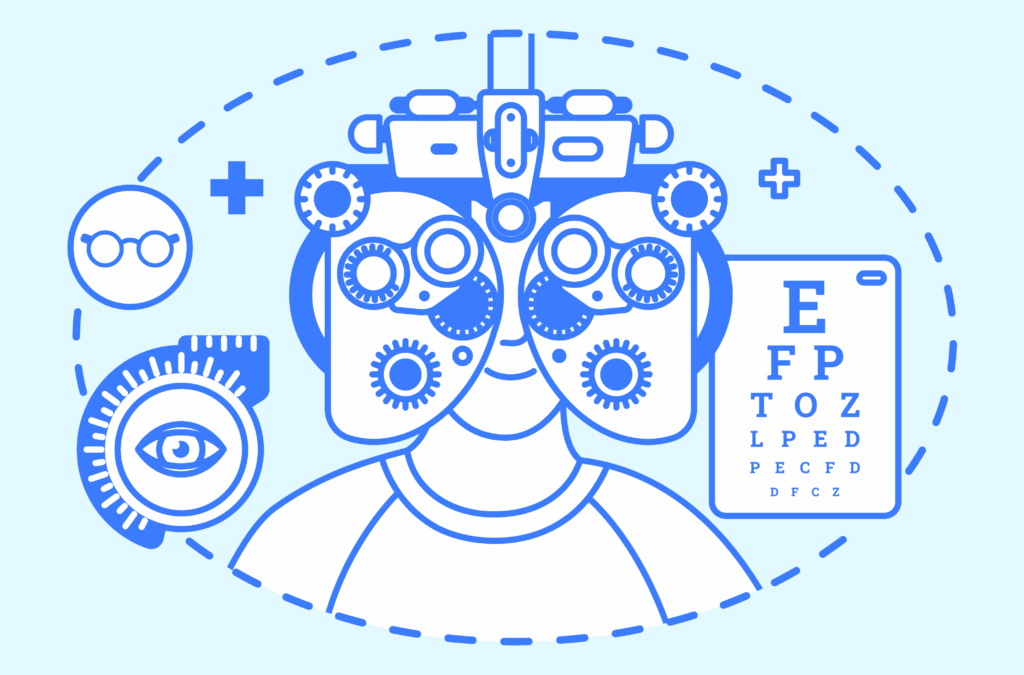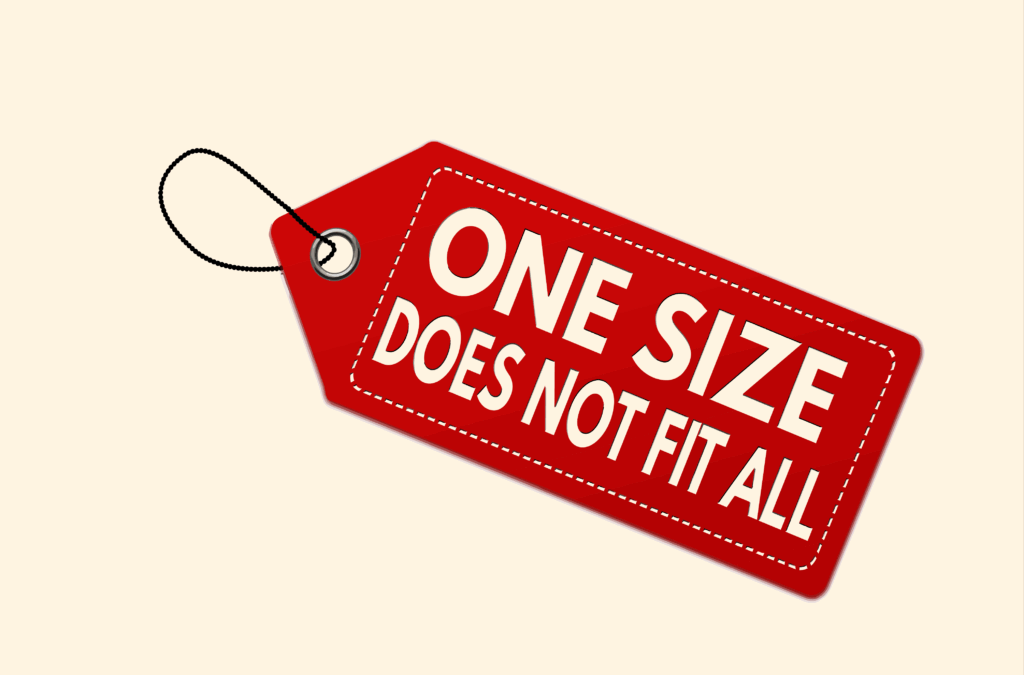
The Bigger Bang Theory

Across the globe, harsh economic realities have forced healthcare providers to find creative ways to treat patients, a movement that has healthcare professionals in this country taking notice.
From low-tech, downward innovation—redesigning expensive products into simpler ones; to downshifting to lower-skilled health care workers; to higher-tech mobile medicine that stretches the availablility of medicine’s scarcist resource—doctors; new ideas are front and center around the globe to control costs and make health care affordable. Creative minds are proving that despite what many believe is the direction of medicine in the United States, not all innovation is high tech or expensive.
In sub-Saharan Africa, cellular telephones save lives every day by bringing access to medical advice to remote regions where the nearest doctor may be 1,000 miles away. In Brazil, children admitted to hospitals are not just treated for their immediate injury or disease. The children routinely receive additional resources for improving their personal care and hygiene. And in an attempt to stop the cycle of repeat hospital visits caused by extreme poverty and the inability to carry on treatment, the children also get information about sexuality, disease, nutrition and other topics. In India, a visionary doctor applies process-improvement tactics normally used in the auto industry to drastically reduce the cost of open-heart surgery.
“Somebody said that it’s out of the stresses of not having enough money that innovations are likely to emerge because they have no choice,” says Dr. Arnold Milstein, director of the Stanford University Clinical Excellence Research Center. “You can’t use conventional methods. What I think is interesting about that from the perspective of a country like ours is that some of those ideas, even though they are born out of the stress of not having enough money, are potentially transferrable to this country.”
Mobile Health’s Promise
The same technology that lets Americans book a vacation on their wireless phones allows doctors in India to counsel diabetics on proper nutrition and send reminders to other patients to take their scheduled medicines. In Africa, where counterfeit meds are so prevalent that an estimated one in three prescriptions dispensed from a pharmacy is fake, customers can text a simple code to find out instantly if the medication is what it purports to be. In remote parts of Mexico, patients use Skype to communicate with their doctor, who may be hundreds of miles away. It is part of a global revolution in what is being called mHealth—the use of wireless technology and mobile devices such as cellular phones to make healthcare more accessible, faster and less expensive.
Rapid adoption of wireless phone technology is expanding the geographical reach of the medical community. It is no longer necessary to live near a hospital or clinic to access their services, and the emerging countries of the world are quick to realize its promise.
“People spend 99.9% of their lives outside of a doctor’s office,” says Dr. Douglas Wood, who directs the value program at the Mayo Clinic Center for the Science of Healthcare Delivery and is director of strategy and policy at the Mayo Clinic Center for Innovation. “So if we were to think about health and home together, we would think about how we would take care of people where they live rather than saying the only way you can get healthcare is through a traditional doctors’ office visit or clinic visit.”
Mobile health is changing the way patients receive healthcare. According to Transparency Market Research, the most impactful trend in the mHealth market is the growth in remote patient monitoring. Remote monitoring of patients can help reduce costs significantly by reducing the amount of time the patient spends in hospitals and by lowering the frequency of follow-up visits. Transparency Market Research estimates the global mHealth market, $1.3 billion in 2012, will reach $10.2 billion by 2018.
Sometime this year the number of mobile telephones in use worldwide will exceed the number of people on the planet. At the end of 2011, the International Telecommunication Union estimated that the planet earth’s nearly 7 billion people were using 5.9 billion cellular phones. The union says 87% of the planet’s population has a mobile-cellular subscription—79% in the developing world. Additionally, one third of the world’s population has Internet access.
Changing Face of Health
Many low- and middle-income countries face what the World Health Organization describes as a double burden of disease. While they continue to deal with the problems of infectious disease and under-nutrition, they are seeing a rapid increase in non-communicable disease risk factors, such as obesity and overweight, particularly in urban settings.
Children in low- and middle-income countries are more vulnerable to inadequate pre-natal, infant and young child nutrition. They are exposed to high-fat, high-sugar, high-salt, energy-dense, micronutrient-poor foods, which tend to be lower in cost. These dietary patterns conspire with low levels of physical activity to sharply increase the incidence of childhood obesity. The problem of under-nutrition, meanwhile, remains unsolved.
But mHealth is showing promise in attacking these issues. Healthcare providers worldwide are mining mHealth to bring advice and counsel to people in desolate locales.
For example: Nearly 300,000 women a year do not survive childbirth or pregnancy, and nearly 3.1 million newborn deaths occur annually. Most of these deaths occur in underdeveloped nations where access to doctors and medical advice is scarce.
In Africa, India and Bangladesh, pregnant women receive recorded voice mails on their cell phones in which medical practitioners offer advice on prenatal and well-baby care. It’s part of a program by the Mobile Alliance for Maternal Action (MAMA), a public-private partnership between USAID, Johnson & Johnson, the United Nations Foundation, mHealth Alliance, and BabyCenter.
The program uses voice mail to deliver critical, stage-based information to pregnant women, new mothers and their families. The majority of the culturally sensitive messages are delivered as entertaining mini-dramas designed for people with low literacy levels. In Bangladesh alone, more than 12,000 mothers, family members, and organizations across the country have registered for the service and will receive the messages through the pregnancy and the baby’s first year of life.
“MAMA’s work in Bangladesh continues to show the power of mobile technology to improve the health of vulnerable communities across the country,” says Kirsten Gagnaire, MAMA global director. “Families rely on (it) to get direct information in their language, right in the palm of their hands.”
In Malawi, the nonprofit Clinton Health Access Initiative uses SMS technology to quickly track down patients who miss scheduled health appointments, communicate early infant diagnostic results and identify patients with other urgent and pressing medical conditions. The program boasts that patients who miss an appointment are seen within two weeks of being reminded.
In Mali, the nonprofit International Institute for Communication and Development has partnered with a local phone carrier to improve child and maternal health monitoring in Yirimadjo, a poor outskirt community of Bamako. The program calls for training local mothers as community health workers and providing them with mobile phones and a special app to conduct prevention programs and to diagnose and treat patients more efficiently.
Drug counterfeiting in emerging nations is responsible for millions of deaths a year, according to the World Health Organization. In some countries an estimated one of every three drugs dispensed is fake—they may contain the wrong ingredients or not have as much active ingredient as advertised. Mobile phone company Orange, in collaboration with m-Pedigree, has developed an SMS system that allows patients and clinicians in Kenya, Cameroon and Ghana to determine whether their drugs are safe by sending a single text and receiving an instant verification. Each medication has a one-time code that is revealed by scratching the cover ink, similar to a lottery ticket. Callers then text the number that is revealed to a server, which sends an instant text reply verifying whether the drug is legitimate.
In India, an estimated 700,000 people do not have access to a doctor. Apollo Hospitals, one of India’s largest healthcare providers, established call centers staffed by paramedics, doctors, nurses and other health advisors who rely on an IT platform with a structured query database to provide appropriate information. In the decade since its inception, more than 700,000 calls have been handled by the call center triage service.
“People are doing things in new and really different ways, and problems are getting solved,” says Dr. David Levy, global leader, healthcare, for PwC, a global consulting company. “There is a fantastic explosion of creativity and innovation, and the way that people are newly engaging with their physicians and providers in different ways—that is relentless. It is irrevocable, and if anybody thinks that this is going to be any different than what we’ve seen happen in financial services or hospitality or travel, they are nuts. It’s not going in any different direction.”
Aging and Chronic Disease
According to the U.S. National Heart, Lung, and Blood Institute, every year more than 35 million people worldwide die from chronic non-communicable diseases—especially heart disease and stroke, diabetes, lung diseases, and cancer. That’s twice the number of people who die each year from infectious diseases, maternal and perinatal conditions and nutritional deficiencies combined. Developing countries are hardest hit. Although chronic diseases account for about 60% of all deaths globally, 80% of these deaths occur in low- and middle-income countries.
At the same time, the populations of developed nations are increasingly becoming older, and thus susceptible to age-related issues such as dementia and arthritis.
Downward Innovation
Technology manufacturers use the term “downward innovation” to describe how they redesign intricate, expensive products into simpler products that can be mass produced at a fraction of the cost. Sometimes it happens in healthcare.
In India, cardiac surgeon Dr. Devi Prasad Shetty has founded a health system that dramatically lowered the cost of open-heart surgery by redesigning the process in much the same way that the auto industry redesigned itself in the 1970s and ’80s. Shetty, who was Mother Teresa’s personal physician, founded the Narayana Hrudayalaya health system in Bangalore in 2001 and has driven the cost of a typical open-heart procedure down to $1,700, compared to about $50,000 in the United States. He calls his method “the Walmart way.”
Shetty relied on economies of scale, breaking down the operation into its component parts and standardizing procedures. The Narayana Hrudayalaya performs about 30 surgeries a day, more than twice as many as any other hospital in India. The more highly paid surgeons work only on the main part of the operation. Less expensive junior doctors open and close the patient.
The hospital also uses a different compensation model. Cardiac surgeons at Shetty’s hospital are paid a fixed salary instead of a typical per-surgery rate, and they are required to perform more surgeries, which drives down the unit cost per procedure.
Narayana Hrudayalaya operates 5,000 hospital beds in India and aims to grow to 30,000 beds in the next five years. Shetty’s approach is attracting attention in the United States. In January, Ascension Health Alliance announced it is partnering with Narayana Hrudayalaya to build a healthcare city in Grand Cayman, the largest of the three islands comprising the Cayman Islands.
Ascension Health Alliance is a Catholic healthcare organization dedicated to transforming healthcare through clinical care and innovation. Its subsidiaries include Ascension Health, the largest nonprofit health system in the United States.
One of Ascension Health Alliance’s goals is to gain an understanding of Shetty’s success at providing high-quality care at low cost and determining if those methods can have an impact on the cost of healthcare in the United States.
“Ascension Health has been working with Dr. Shetty for two years to explore ways to adapt his success at providing high-quality healthcare at low cost,” said Anthony Tersigni, president and chief executive officer of Ascension Health Alliance.
The alliance will provide facilities planning, supply chain management and biomedical engineering services to the project, while Narayana Hrudayalaya—which means “God’s compassionate home” in Sanskrit—will provide the Cayman team with technical input and direction. The multi-specialty hospital will provide services not widely available in the region, such as open-heart/bypass surgery, angioplasty, heart-valve replacement, cancer treatment, bone marrow transplant, nuclear medicine, organ transplant and orthopedics. Once complete, the hospital will have as many as 2,000 beds.
A Bigger Bang
The United States spends more money on healthcare by far than any other nation, but the results don’t reflect the costs. In 2010, the most recent year for which statistics are available, U.S. healthcare spending reached $8,233 per person. Norway was the next closest with per capita spending of $5,388, according to the Organization for Economic Cooperation and Development. Median per capita spending was $3,266. Life expectancy in OECD countries averages 79.8 years, compared to 78.7 years in the United States.
With less money available for healthcare, the rest of the world has devised innovative strategies to make their spending more efficient.
“Current evidence suggests the care in wealthy countries is not radically different than ours,” says Milstein. “It tends to be a lot less expensive, and it tends to do a little bit better on primary and preventive care and a little bit less well on care for extremely complex, late-stage conditions. We’re better on rescue care. Other wealthy countries are getting somewhat better outcomes at a much lower cost. Their care delivery is not radically different than ours. It just tends to be a little bit better on the blocking and tackling and a little bit less better on the highly complex.
“The more interesting question is, what is the comparison between our country and countries that are not wealthy, particularly those that are developing quickly, like Brazil, India and China? There it’s a very different story. They start out with much, much lower budgets and much, much less infrastructure, and so what they have had to do is—without the constraints of a ‘traditional’ healthcare system—they’ve had to work the problem backwards. They only have a limited amount of money to spend, so how can they get the most bang out of their product?”
Making do with existing equipment longer is one solution.
“One of the characteristics of many advances in technology is that it tends to be expensive and only a moderate improvement over the less expensive stuff that preceded it,” says Milstein. “In poor countries, the question is do we really need to have the latest MRI machine if the one that we have for 99% of the problems we face is just as good at making a diagnosis as the latest?
“They might operate an MRI facility 20 hours a day when in this country they operate six hours a day. In the end, it is economics that compels humans to use their ingenuity to find ways to obtain equally good or almost as good results for a lot less money.”
Public-private partnerships are another way governments are stretching their healthcare dollar.
“There are unprecedented burdens on the healthcare systems, and most of them around the world are more publicly oriented,” Levy says. “They are realizing that they probably can’t handle this thing alone and there is lots and lots of redressing public-private sector balance in both financing and responsibility. I’d say that the major trend here is that government is focusing on its obligation for access and quality while thinking of ways to leave to the public sector efficiencies and innovation, which the public sector doesn’t think government is terribly good at. And they are probably right.”
Examples of this public-private marriage include the Queen Mamohato Memorial Hospital in the African nation of Lesotho, which is an example of a new healthcare collaboration between the public and private sectors. Lesotho, one of the world’s poorest nations, spends $40 per person on healthcare. For decades, Lesotho needed to replace its crumbling, inefficient public hospital, the 100-year-old Queen Elizabeth II, but didn’t have the money to do so.
In 2007, the government opted to partner with Netcare, a leading South African hospital operator, to build and operate a new 425-bed hospital—the Queen Mamohato Memorial Hospital—along with an adjacent clinic and the renovation of three satellite clinics. The government provides Netcare an annual fixed service payment adjusted annually for inflation. In return, Netcare agrees to treat all patients, regardless of their condition, in the hospital and clinics. The new hospital, opened in 2011, today handles 25% more patients than its predecessor.
One of the longest-running public-private healthcare partnerships is in Alzira, a district of about a quarter million people in Valencia, Spain. Formed in 1999, the government partnered with a consortium of providers who were required to serve all the district’s residents, regardless of income. The consortium is paid a capitated rate and its return on investment is capped at 7.5% to ensure profits are not withdrawn from the system. To ensure satisfaction, patients may go elsewhere for treatment, and the consortium must repay the government 100% of that fee.
Downshifting
Stanford’s Milstein calls it “downshifting.” Others call it practicing at the top or bottom of your license. It is most commonly known as “scope of practice.” By economic necessity, the rest of the world has either moved to, or is moving toward, systems where healthcare is delivered by less skilled workers.
“As a general rule, what they do is tend to downshift a lot of the care delivery away from expensive in-person visits with doctors and activity inside hospitals, toward more electronically mediated forms of contact with health professionals,” Milstein says. “And there is also a greater reliance on less expensive and more narrowly skilled health workers. They don’t have the luxury of a lot of doctors and a lot of nurses, so they do what you have to do when you’re trying to get the best outcomes on a limited budget—you take people who are less well-trained and you give them a narrower scope of responsibilities so it doesn’t take a lot of education and investment to get them to be competent in that narrow range, and then you support them with technology.
“Generally there is a belief that there is a lot of upside within our healthcare system to do that, but we have postponed for many years doing that, with the exception being in the safety net in the U.S., where you do have our equivalent of a resource-constrained environment.”
For Levy, downshifting is a natural result of healthcare’s evolution as an industry.
“There is this notion that people don’t appreciate,” he says, “and that is all industries in their evolution ultimately become more precision based. When an industry becomes more precision based, then all of the roles and relationships of the people in the industry change. The reason I call this a sleeper is because, when we see a sector becoming a precision-based sector, all of a sudden people take over responsibilities that others had in the system.
“That has fundamental repercussions as to who take cares of what. The problem we’re seeing is that we’ve got all these doctors taking care of chronically ill old people, and the truth is the numbers don’t support doctors taking care of people forever. There just aren’t enough medical schools that could ever be built or doctors enough who could be trained to take care of all the old people who are coming down the horizon. This is a big problem. Telling family doctors that they don’t have to do most of what they do, that it can be done by nurses, doesn’t go over too well.
Solution for Medical Errors
Hospitals across the world are being reengineered to incorporate new technology solutions to slow the occurrence of “never events,” medical mistakes deemed so egregious that medical professionals agree they should never happen.
Johns Hopkins patient safety researchers estimate that, across the United States, a foreign object such as a sponge or towel will be mistakenly left inside a patient’s body after an operation 39 times a week. They also note than on average the wrong procedure is performed on a patient 20 times a week. On another 20 occasions each week, a surgeon operates on the wrong body site.
Dr. Marty Makary, associate professor of surgery at the Johns Hopkins University School of Medicine, says an estimated one in four patients in a hospital setting will be injured in some minor way by a medical mistake.
“Unfortunately, the problems of medicine do erode the trust the public has in the system and in their doctors,” Makary says. “Here’s an example where we can take a problem and reengineer the system so that we can make it as safe as the aviation industry. Even though the public has complaints about the quality of their airplane flights, in general they have an enormous trust in the safety of their flights.”
Makary was the lead author on a recent study published in the online journal Surgery that attempted to quantify how often a medical error occurs. The study used the National Practitioner Data Bank, a federal repository of medical malpractice claims, to identify malpractice judgments and out-of-court settlements related to retained-foreign-body, wrong-site, wrong-procedure and wrong-patient surgeries. They identified 9,744 paid malpractice judgments and claims between 1990 and 2010, with payments totaling $1.3 billion. Death occurred in 6.6% of patients, permanent injury in 32.9% and temporary injury in 59.2%.
“There are now some good high-tech solutions, or ways to reengineer hospitals, to prevent these,” Makary says. “One of them involves a radio frequency identification tag that is embedded into the sponges. That tag can be detected by an external sensor or even a wand that is waved over the patient.”
Other steps being incorporated into hospitals’ safety routines include mandatory timeouts in the operating room before operations begin to make sure medical records and surgical plans match the patient on the table. Most hospitals now use indelible ink to mark the site of the surgery before the patient goes under anesthesia.
The Johns Hopkins Hospital pioneered the use of surgical checklists more than a decade ago to ensure common protocols are used during surgery.
The University of Michigan Health System has created a new protocol that includes using state-of-the-art technologies aimed at ensuring that no foreign objects are left behind during surgery. The university’s health system performs 46,000 surgical cases a year, including some of the most advanced heart, vascular, transplant and cancer surgeries in the country. It uses bar-coded sponges and computers to reduce the possibility of a sponge being left behind. Bar codes are scanned when sponges are used and scanned again when they’re taken out of the body. If there’s a count discrepancy, the surgeon knows to search the surgical field for something that may have been overlooked. The bar-coded sponges also contain a radiopaque tag, allowing a radiologist to see it on an X-ray.
“For the first time, we’re seeing hospitals now adopt that kind of technology,” Makary says. “Medical mistakes in the ways in which we harm patients are a very small portion of the problem because, even though these events occur thousands of time a year, they are so rare given the number of operations performed. They are, however, ones for which the public has very little tolerance.”
So no matter the issue, whether it be finding ways to make health care affordable or to reduce the number and serverity of medical errors; creative thinking on every continent is being monitored for new ideas and innovations that will support better health for a rapidly growing global population.




